Acquisitions between east and west
Author:
Don Duco
Original Title:
Aanwinsten tussen oost en west
Publication Year:
2007
Publisher:
Stichting Pijpenkabinet
Journal:
Nieuwsbrief Pijpenkabinet
Description:
Illustrating and discussing an Asian bamboo pipe with a man and a European system pipe in the shape of a gun.
Chinese pipe
As all antique lovers know, nearly all exotic pipes are offered as opium pipes. The magic thrill about opium, in combination with the suppression of the use, adds to the commercial success. However, the amount of tobacco pipes from Asia is larger than you should expect. Tobacco is smoked in practical all Asian countries and pipes are known from all of them.
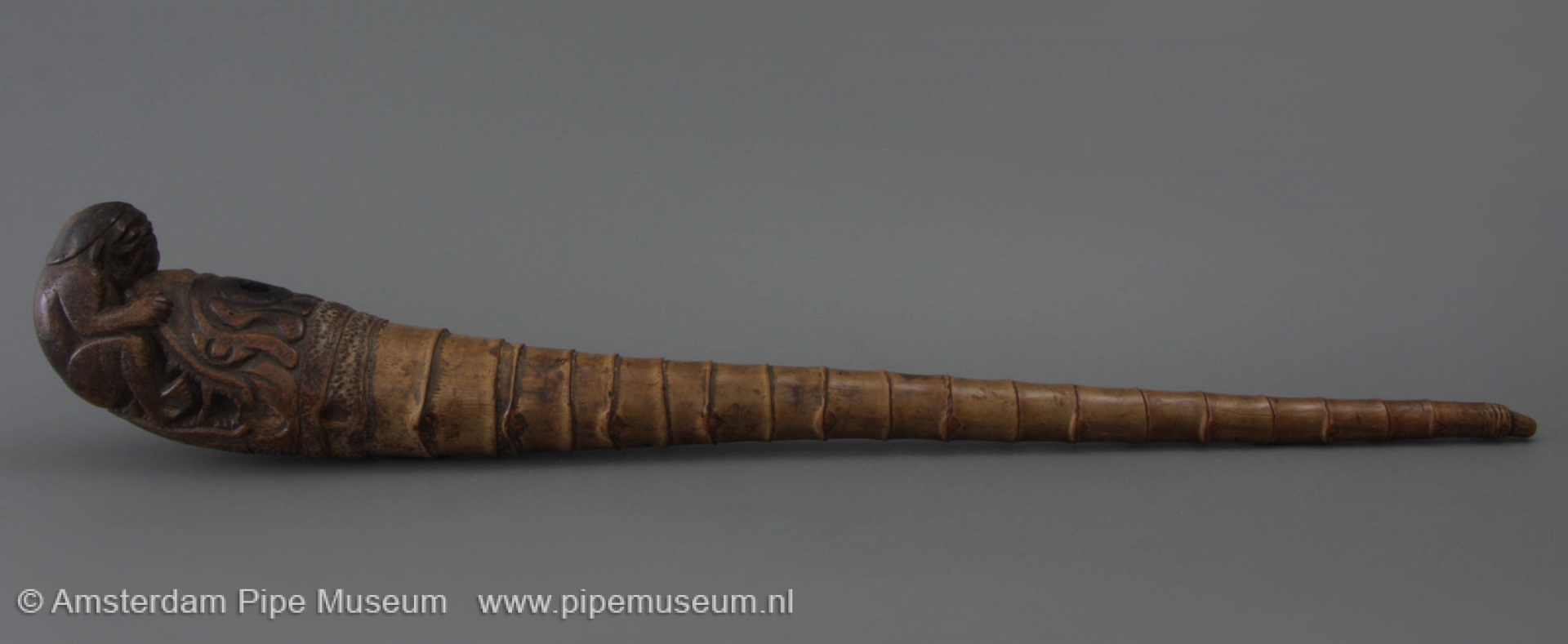
Earlier this year the Pijpenkabinet acquired a unique Chinese pipe, which again has nothing to do with opium. It is a tobacco pipe made out of a bamboo trunk. This type of pipe is known form Southern-China and Burma, although the acquired example is special for its huge size. The length of 70 centimetres is not uncommon, but the diameter of eight centimetres is exceptional. Normally younger branches of bamboo are used, not wider than one or two centimetres. Since tobacco is smoked in small quantities in Asia, pipes have usually a tiny bowl. I this case, the bowl is bigger, over a centimetre wide and three deep. Quite modest for a modern European briar pipe, but rather large for an Asian pipe. According to the usual Chinese smoking habit, finely cut strong tobacco is smoked. With this size the contents of the bowl will result in a heavy smoke.
Pipes made out of bamboo branches and trunks are very popular in China. The Chinese have a strong preference for natural design and the bamboo gives a fine rhythm of the knobs and the alternating enterings of the leaves.
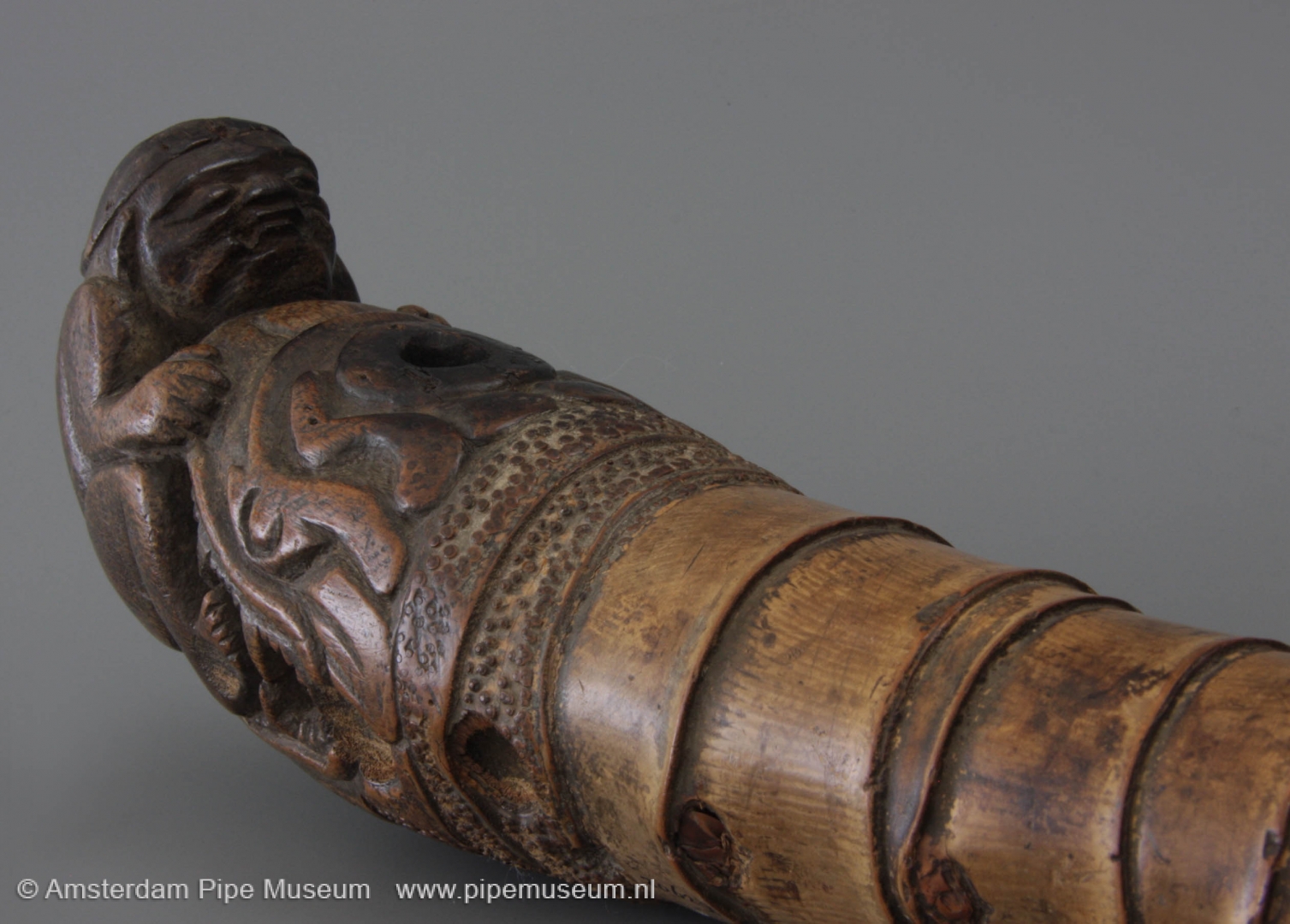
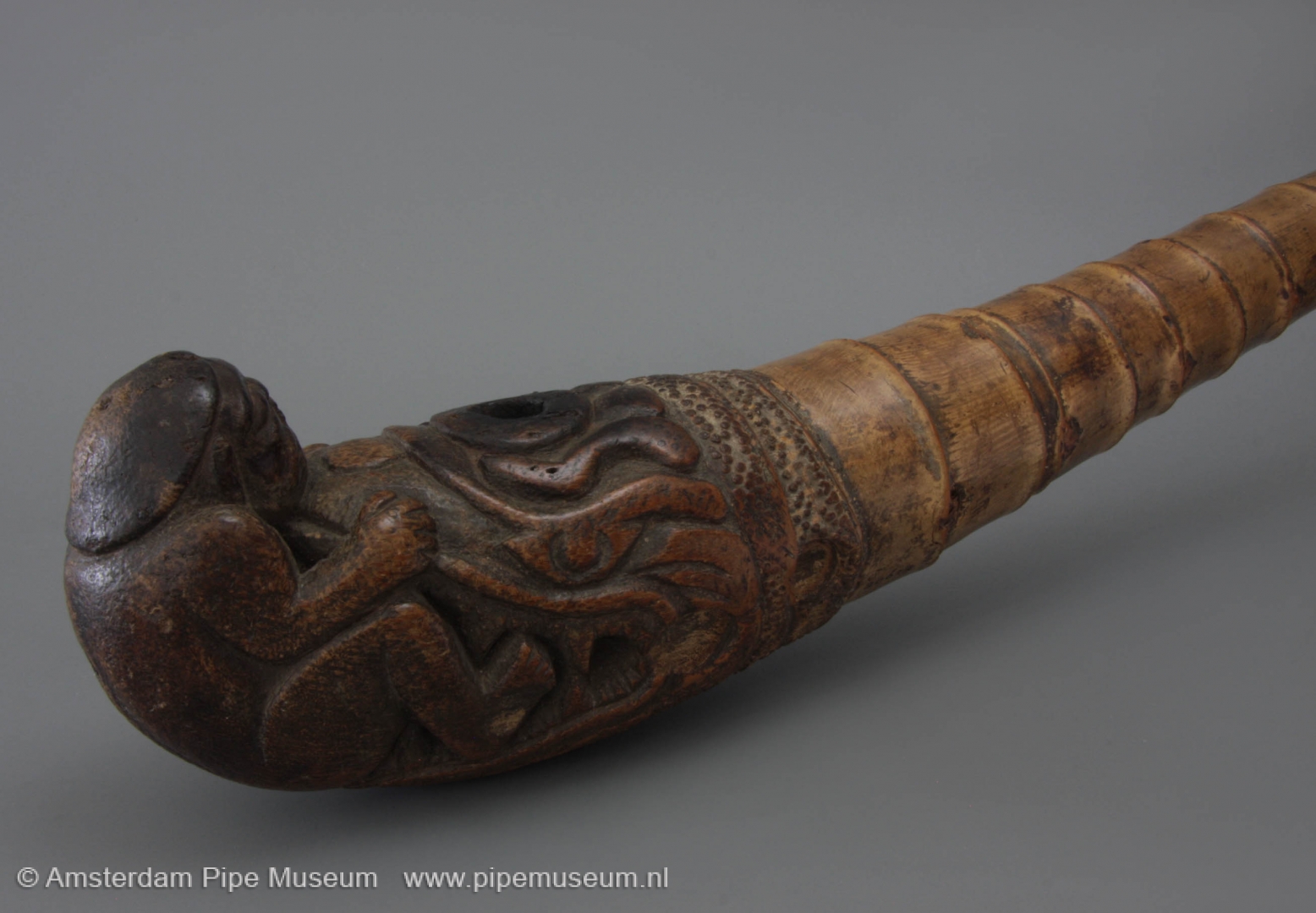
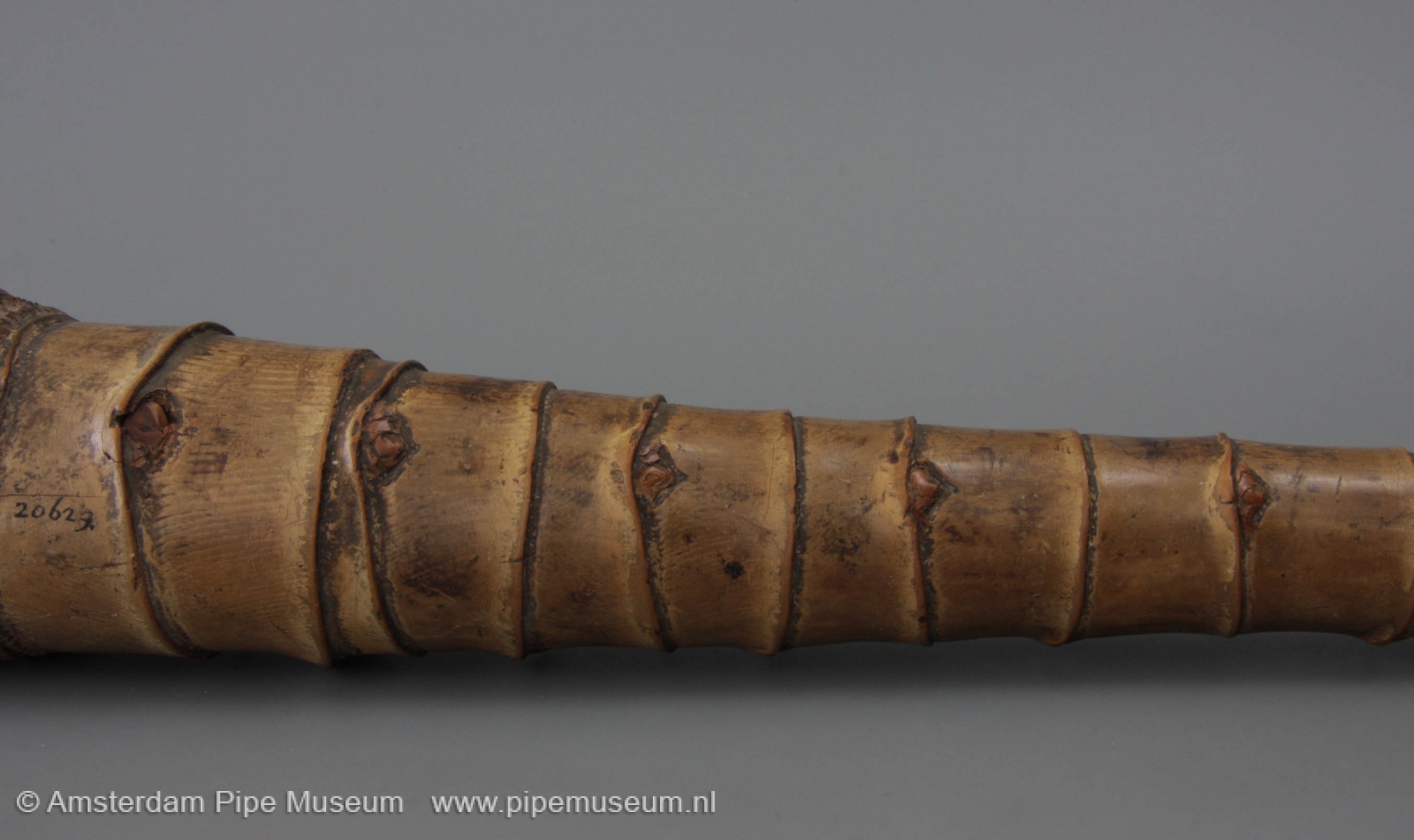
The trunk part of this particular bamboo is so heavy that it offers the possibility to make a carving. A fish head with wide-open mouth holds a crouching figure between its sharp teeth. Originally the pipe has been finished with several brass parts and ornaments: around the bowl opening, the hat of the figure including a metal mouthpiece. Small nail holes betray the lost finishings.
The origin of the pipe is uncertain. The object was found in the antique trade in The Hague, the Netherlands and it is said that the pipe was preserved some generations in Dutch private possession. Comparable objects are hard to find; while the smaller standard-size pipes are known by the thousands, these large ones are extremely rare.
Amsterdam, Pijpenkabinet collections Pk 18.502
French briar
In Saint-Claude, the centre of pipe making in France, we acquired a remarkable pipe for the museum, dating back to about 1920, so an early briar pipe. Photographed up-side down the object clearly represents a revolver. The bowl is a so-called neogène, an oval shape suitable to be produced by machines. The shaft is mounted with a nickel band in which a metal stem is fixed with a screw attachment. In the right position a keeper, designed as the trigger of the revolver, kept the stem in its right position. The pipe stem holds another secret: to the vulcanite mouthpiece a bone shank is attached that goes through the wide nickel stem, and seems to have functioned as an isolator. At the end of the bone tube a part made out of softwood absorbs the moisture of the smoke before it can enter the smoke channel. In fact, this pipe is an early example of the system pipes which became extremely popular in the 1950’s for a dry, clean and hygienic smoke.
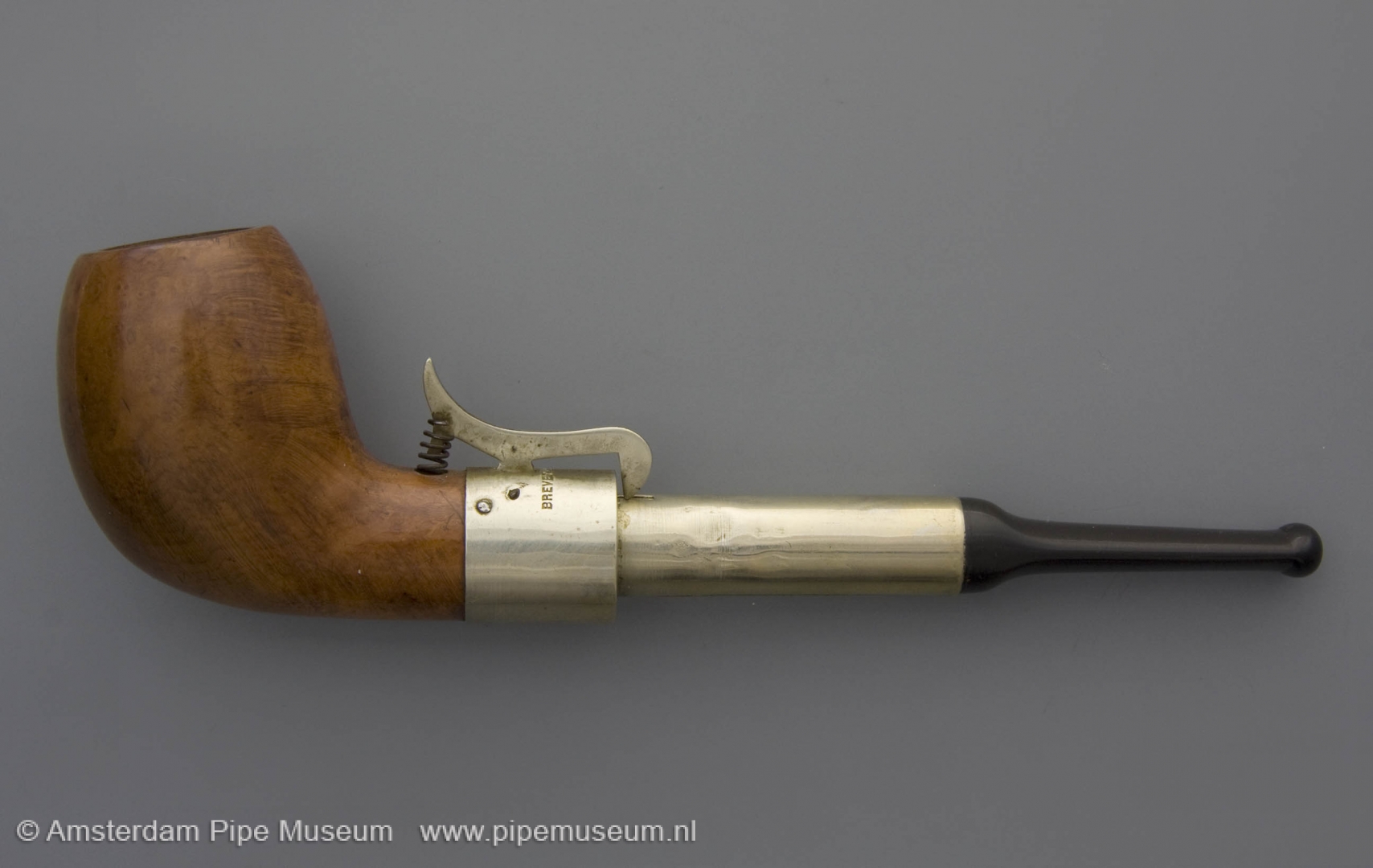
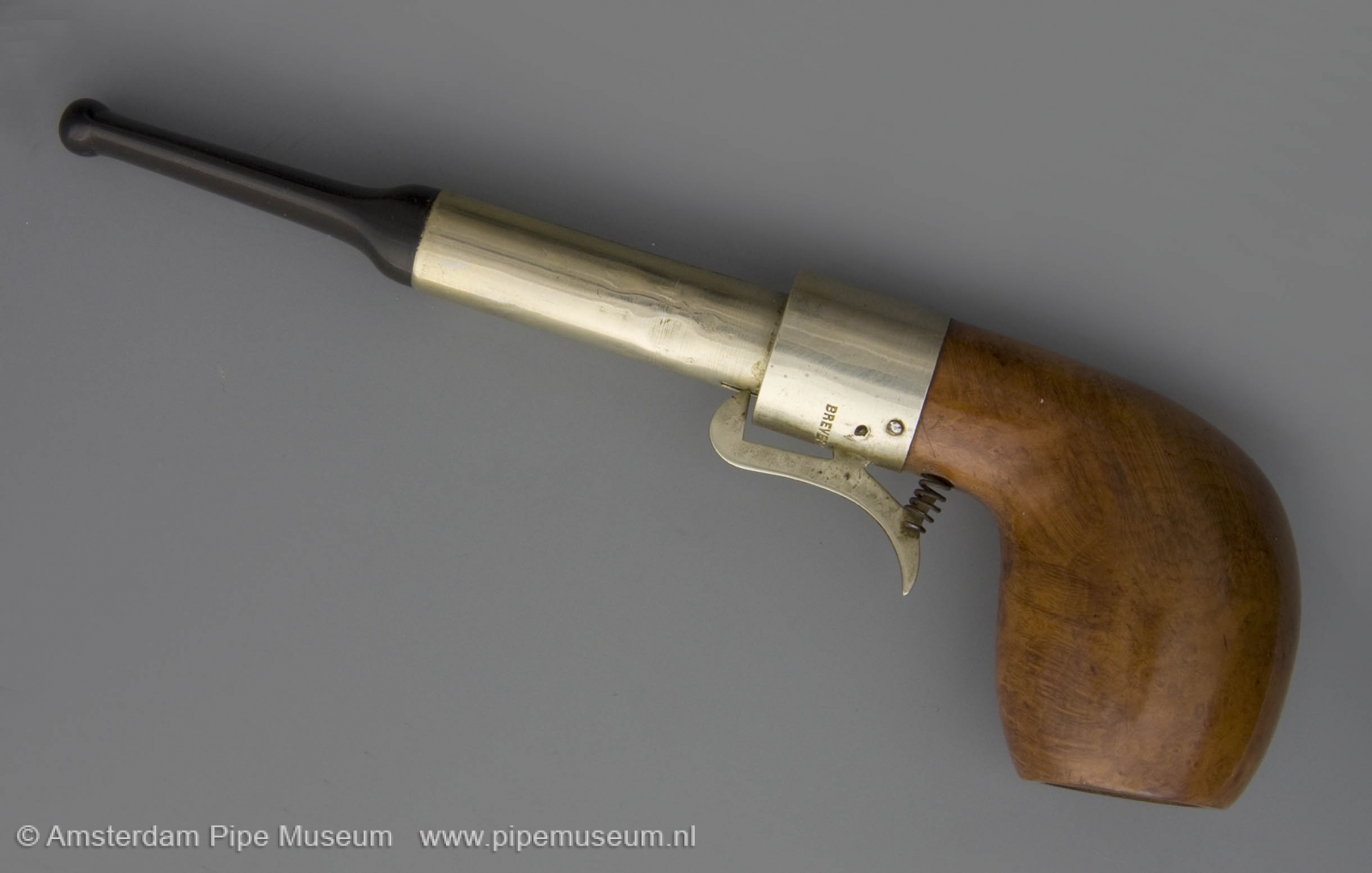
A text printed in the metal rim says that the pipe is patented. The intricate way in which all different elements are assembled, suggests that the pipe has been made by an inventor. However, a commercial success was hard to foresee with such a difficult make. For our collection it is a fine example, both of an early system pipe and a pipe-revolver combination, of which our collection holds already half a dozen varieties.
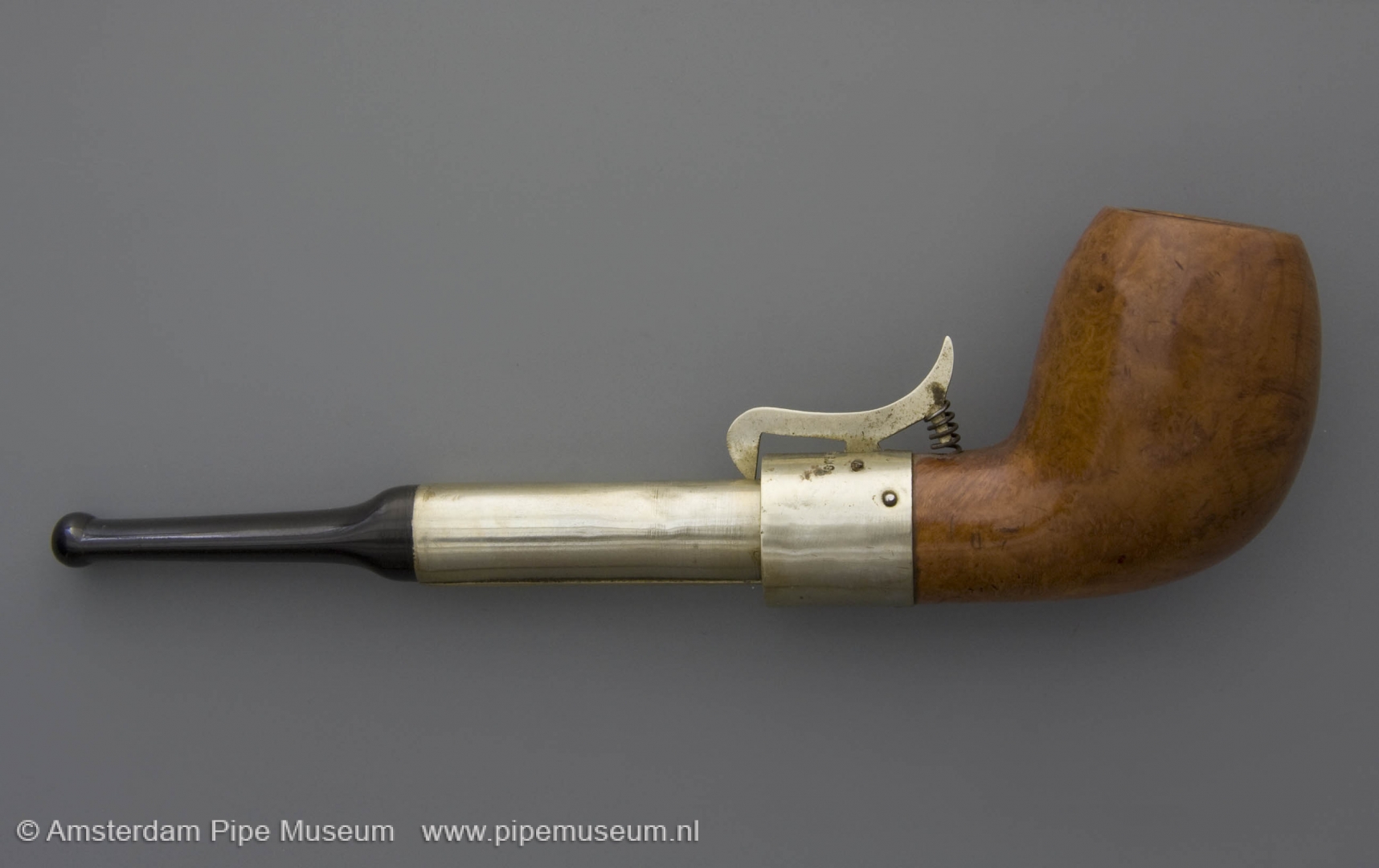
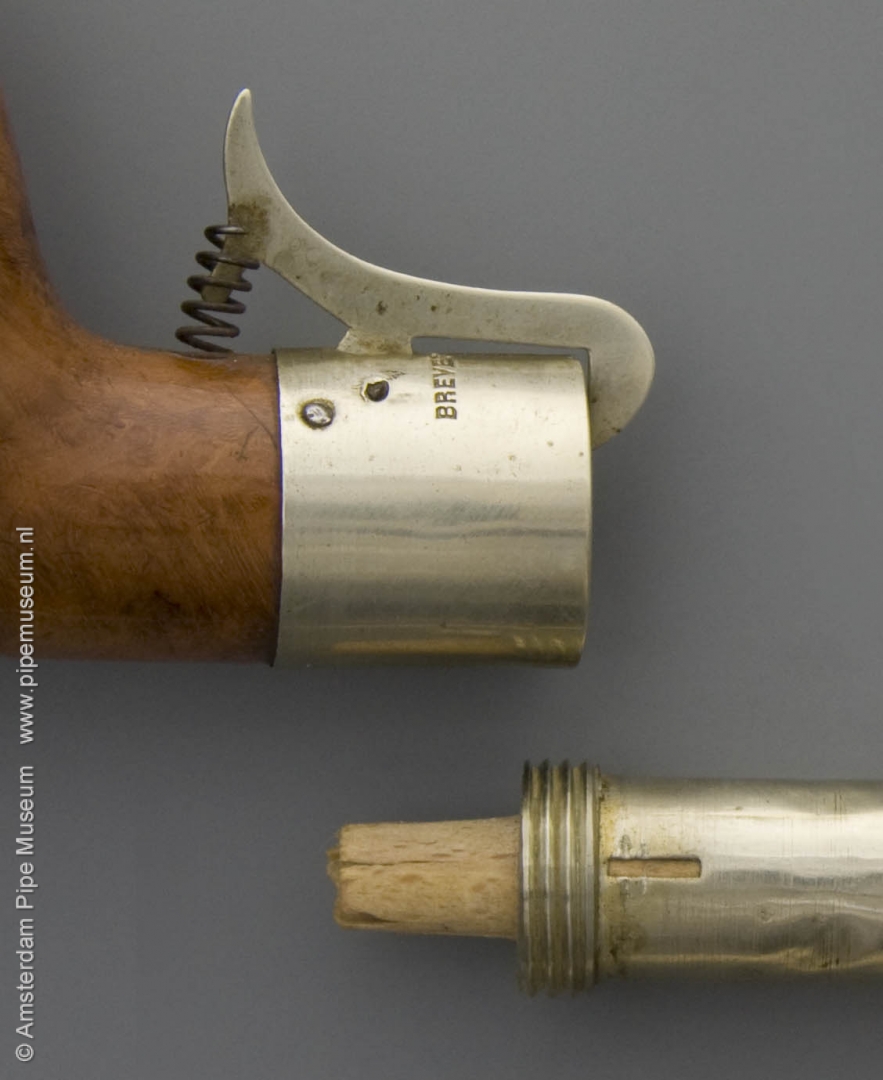
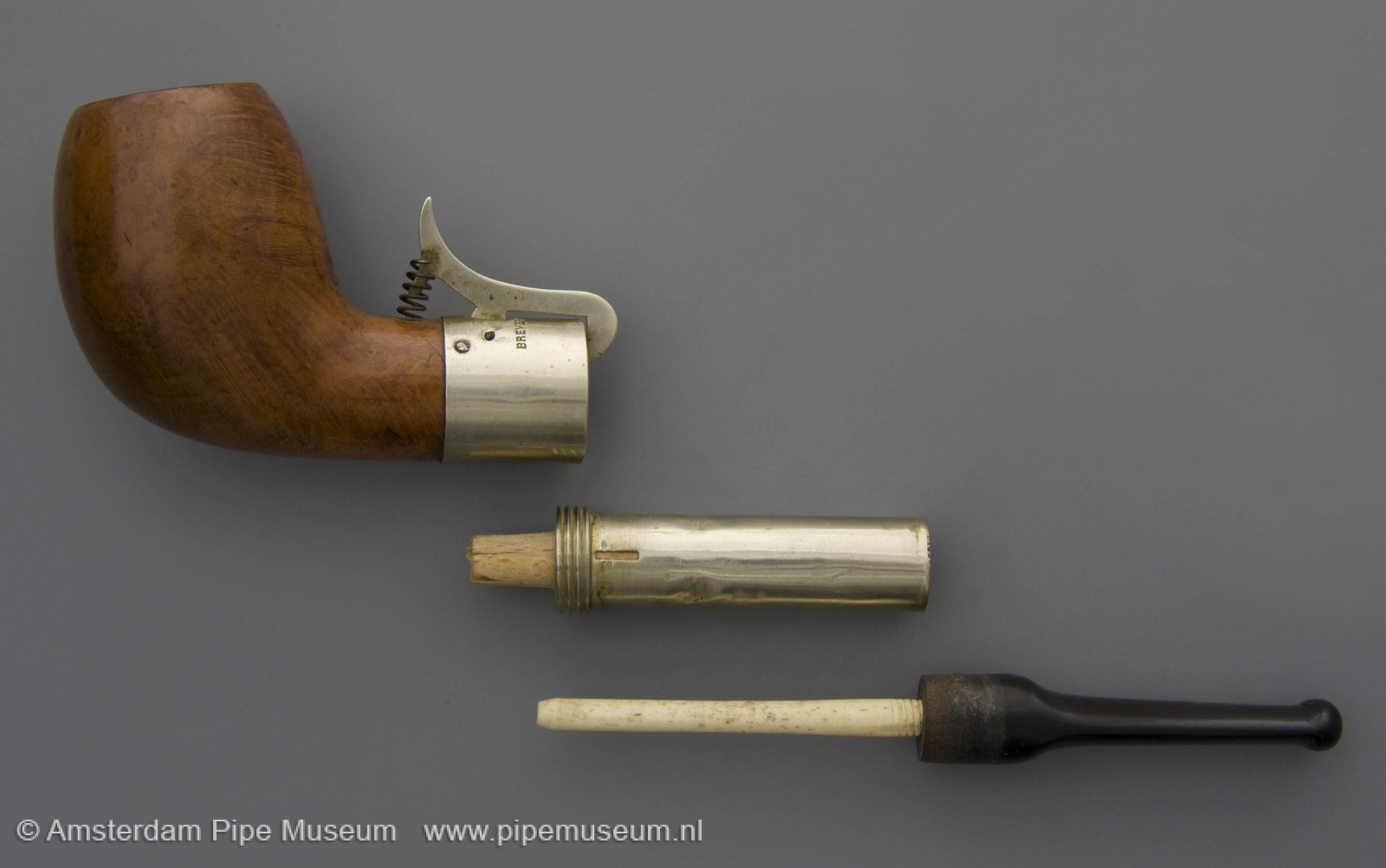
Amsterdam, Pijpenkabinet collections Pk18.550
© Don Duco, Pijpenkabinet Foundation, Amsterdam – the Netherlands, 2007.